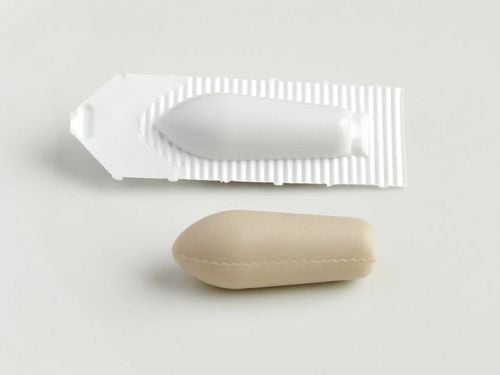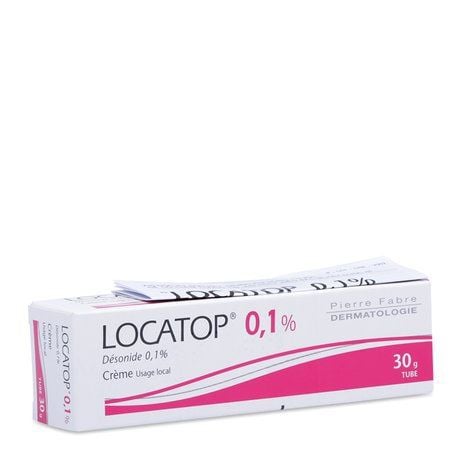Aristocort is often used to treat dermatological problems such as psoriasis and dermatitis. To better understand the uses of Aristocort, its side effects, and how to use it effectively, please read the following article.
1. What is Aristocort?
Aristocort's main ingredient is triamcinolone acetonide 0.02%, a corticosteroid drug, formulated as a 100-gram topical cream manufactured by Sigma Pharmaceuticals.
Aristocort Cream also contains the following inactive ingredients:
- Benzyl alcohol;
- Wax emulsifier NF;
- Isopropyl palmitate;
- Glycerol;
- Sorbitol solution (70% non-crystallizing);
- Lactic acid;
- Purified water.
Aristocort topical also contains the inactive ingredient white soft paraffin. It does not contain lanolin, preservatives, or colorants.
2. What is Aristocort used for?
Aristocort topical cream is prescribed by doctors for the following conditions:
- Treatment of certain moderate to severe skin conditions, such as various forms of dermatitis and eczema, including seborrheic dermatitis.
- Neurodermatitis, caused by repeated rubbing or scratching, is a chronic skin condition.
- The drug is also used to treat otitis externa (inflammation of the outer ear, ear canal), anal and vulvar itching.
- Aristocort Cream 0.02% helps relieve symptoms such as itching, redness, dryness, scaling, crusting, and discomfort.
3. Contraindications of Aristocort Topical Cream
You should not use Aristocort Cream if you:
- Are allergic to triamcinolone or any of the ingredients in Aristocort Cream;
- Are pregnant or breastfeeding without discussing it with your doctor;
- Have viral skin infections, skin tuberculosis, rosacea (a chronic skin condition), perioral dermatitis (a rash on the face around the mouth), fungal skin infections, or ulcers;
- Have damaged skin.
4. Side effects when using Aristocort
Many side effects can occur when using Aristocort topically.
Common:
- Burning, itching, or redness of the skin;
- Skin rash;
- Dry, scaly skin or skin ulcer;
- Blisters containing blood on the skin;
- Blood vessels visible under the skin;
- Skin color changes;
- Stretch marks on the skin;
- Thinning of the skin.
You should notify your doctor immediately if you experience these conditions:
- Back pain;
- Blurred vision or vision loss;
- Purple-red lines on the arms, face, legs, trunk, or genitals;
- Leg swelling;
- Fullness or pain in the stomach;
- Eye pain;
- Skin tears;
- Unusual bruising;
- A fuller or rounder face than usual;
- Irregular heartbeat;
- High blood pressure;
- Skin irritation around the mouth;
- Anxiety, irritability, or fatigue;
- Decreased sex drive or ability in men;
- Nausea or vomiting;
- Worsening infection;
- Rapid weight gain or loss;
- Unusual hair loss;
- Irregular menstrual periods;
- Signs of an allergic reaction, such as rash, hives, itching, red, swollen, blistered, or peeling skin;
- Wheezing;
- Tightness in the chest or throat;
- trouble breathing, swallowing, or talking;
- Unusual hoarseness;
- Swelling of the mouth, face, lips, tongue, or throat.
- Signs of high blood sugar, such as confusion, sleepiness, increased thirst, increased hunger, frequent urination, flushing, rapid breathing, or fruity breath odor.
- Signs of weak adrenal glands, such as severe stomach pain or nausea, dizziness, fainting, muscle weakness, fatigue, mood changes, lack of appetite, or weight loss.
Some people may experience other side effects not listed. Therefore, check with your doctor if you notice any concerning symptoms while using this medicine.
5. Drug Interactions
There may be interactions between Aristocort and topical medications containing corticosteroids. If you are taking any medications containing corticosteroids, talk to your doctor or pharmacist. Depending on your specific circumstances, your doctor may advise you to:
- Stop taking one of the medications;
- Change one or both medications;
- Change the way you are taking one or both medications.
6. Notes When Using Aristocort Topical Medicine
- When Aristocort is used for a long time on large areas of skin and is covered with bandages, it can cause more of the medicine to be absorbed into the bloodstream, increasing the risk of side effects. Therefore, the medicine should only be used for a short time and stopped when the side effects are resolved.
- Be careful when using the medication on areas of skin near the eyes, ensuring the medication does not get into the eyes, as this can lead to increased intraocular pressure.
- Topical corticosteroids can increase the risk of developing skin infections.
Prolonged use of topical corticosteroids can cause the skin to become thin, soft, or develop stretch marks. - This medication should not be used during pregnancy unless the benefits outweigh the risks.
- It is not known whether triamcinolone acetonide passes into breast milk, so women who are breastfeeding should consult their doctor before using this medication.
- Do not use Aristocort on areas of skin that rub together, such as under the arms or groin, unless directed by your doctor.
7. How to Use Aristocort Topical Cream Effectively
Use Aristocort according to the dosage prescribed by your doctor. Depending on each skin condition and its severity, your doctor will prescribe the appropriate dosage.
The dosage below is for reference only:
- Treatment of dermatitis, eczema, and psoriasis in adults: Apply a thin layer of medicine to the affected skin area two to four times a day.
- Treatment of dermatitis, eczema, and psoriasis in children: Apply a thin layer of medicine to the affected skin area two to four times a day.
How to use:
- Apply a small amount of Aristocort cream to the affected area.
- Use just enough to cover the area without causing discomfort. Do not rub the medicine into the skin or stretch the skin.
- If using Aristocort cream, use enough to be absorbed into the skin without leaving residue.
- If using Aristocort ointment, apply just enough to create a smooth layer over the affected area.
- Do not use on open wounds unless directed by your doctor.
- Wash your hands after using Aristocort. Avoid contact with the eyes. If contact occurs, rinse with water.
- Do not bandage or wrap the treated area unless directed by your doctor.
- Use Aristocort at the same time each day.
It is important to use Aristocort exactly as your doctor instructed. If you use it less often than prescribed, it may be less effective, and your skin problem may not improve. Using it more often than prescribed may not improve your skin problem faster and may cause or worsen side effects.
8. Overdose or Missed Dose
If someone has overdosed and has serious symptoms such as passing out or trouble breathing, call 911 or get emergency medical help.
If you miss a dose, take it as soon as you remember. If it is almost time for your next dose, skip the missed dose and take your next dose at the regular time.
Store the medication at room temperature, between 59–86°F (15–30°C), away from light and moisture. Do not store it in the bathroom or refrigerator. Keep all medications out of the reach of children and pets.
Do not flush medications down the toilet or pour them down the drain unless instructed to do so. Properly dispose of this product when it expires or is no longer needed.
The above is information about the uses, dosage, and how to use Aristocort topical. To ensure safety, patients should read the instructions carefully and consult a doctor or pharmacist before use.
Reference source: drugs.com
To arrange an appointment, please call HOTLINE or make your reservation directly HERE. You may also download the MyVinmec app to schedule appointments faster and manage your reservations more conveniently.








